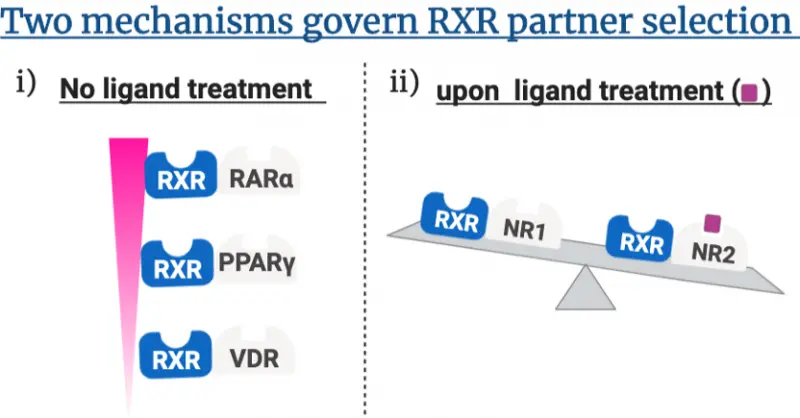
Lina Fadel, György Vámosi and their collaborators from László Nagy’s lab in Debrecen and from Katalin Tóth’s lab in Germany have shown that nuclear receptors (NR) such as retinoic acid receptor (RAR) or vitamin D receptor (VDR), which share retinoid X receptor (RXR) as a common heterodimerization partner, compete for heterodimerization with RXR. They also revealed that this competition is governed by two mechanism; i, in the absence of ligand treatment, there is a hierarchy in the binding affinities between RXR and its partners; ii, upon ligand treatment RXR is more prone to heterodimerize with the liganded partner.
These results can help explain the unexpected side effects associated with the therapeutic use of NR ligands despite the high specificity of the drug-NR interaction. Side effects include symptoms of vitamin D deficiency in patients receiving systemic vitamin A treatment; rickets in children, hip fractures in elderly and low serum calcium levels. This may have pharmacological implications and help design novel treatment strategies utilizing already FDA-approved drugs in an appropriate combination. The paper was published in the Journal of Biological Chemistry, doi: 10.1074 / jbc.RA119.011614 (IF: 4.238).